MXA INTERVIEW JIM PERRY IS THE MAN BEHIND THE MEN IN BLUE
By Jim Kimball
IN THE EARLY DAYS OF MOTOCROSS YOU AND YOUR BROTHER WERE ASPIRING PROS AND YOU WERE WORKING AT PRO CIRCUIT. Yes, I got into this sport by racing motorcycles, and I worked my way up to the Pro level in the local CMC and CRC series in Southern California. I think I met Mitch Payton through my brother, who bought a Husky in the early 1980s. Anaheim Husky was close to our house. We could ride our bicycles to Pro Circuit after school. It was a high-performance Husqvarna shop, but as time went on, he got into Japanese bikes, and I raced Suzukis, Kawasakis and Hondas throughout the years. Racing the CMC series was a pretty big deal in Southern California in the 1980s. The next stop was becoming an AMA Pro, but I wasn’t quite good enough to go beyond Southern California. I also got hurt a few times and decided I needed to step away from racing and get a real job. I ended up working at Pro Circuit shortly after high school.
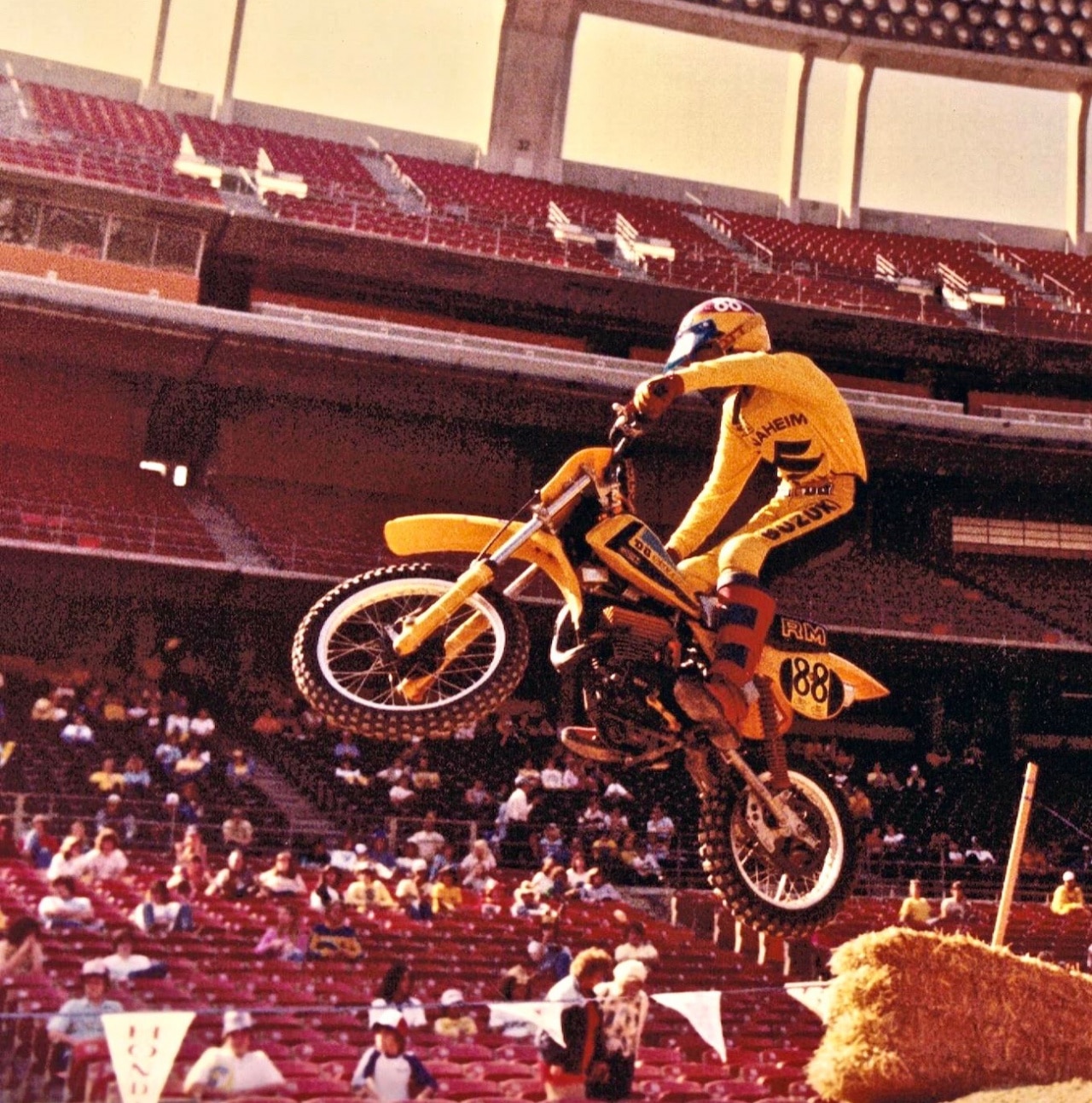 Who knew back in 1981, when Jim Perry was racing his Suzuki RM80 DG Package Racer in Anaheim Stadium, that he’s be running an AMA Supercross team.
Who knew back in 1981, when Jim Perry was racing his Suzuki RM80 DG Package Racer in Anaheim Stadium, that he’s be running an AMA Supercross team.
SO, YOU WENT TO WORK FOR MITCH PAYTON AND YOUR ROLE THERE CHANGED QUITE A BIT. Pro Circuit/Anaheim Husqvarna started in the late 1970s. It was nowhere near as big as it is today, so it was an after-school job for me. I did everything I could do to help out—sweeping floors, emptying trash cans, answering the phone, and doing UPS shipping and service work. Then, within a few months of my being there, the engine side of things exploded and Mitch needed somebody to help full-time engine side. I was that guy. I got into the engine side of things early on, and that is what I did all the way to the very end.
SO, YOU WERE ADVANCING UP THROUGH THE PRO CIRCUIT RANKS AT A PRETTY FAST PACE. Mitch was the guy who developed things, like the cylinder porting, engine settings and pipe specs. I was just doing the production work, where people would send their cylinders in and we would do the modifications and send them out. That was my role early on, but later down the road, Mike Hooker left to go to Team Honda, and I moved over to his role as the manager of the Pro Circuit race team.
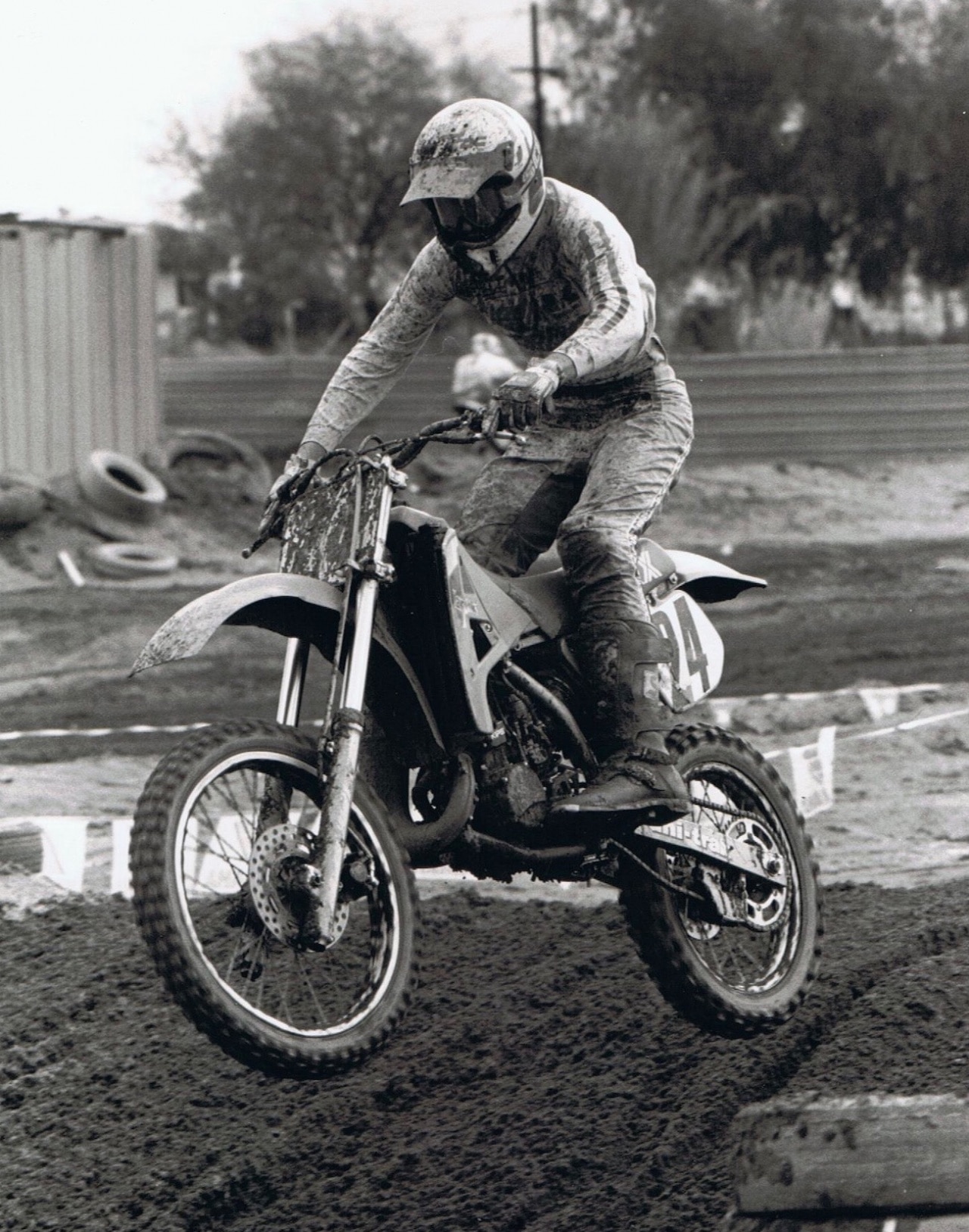 Jim Perry racing his 1996 Kawasaki KX125 at SoCal’s Perris Raceway.
Jim Perry racing his 1996 Kawasaki KX125 at SoCal’s Perris Raceway.
“I WAS NOT NECESSARILY AT THE VERY FOREFRONT OF THE TEAM PEAK HONDA PROGRAM, BUT I WAS DEFINITELY INVOLVED ON THE BACK SIDE OF IT.”
IT MUST HAVE BEEN AN EXCITING TIME WHEN PRO CIRCUIT BECAME HONDA’S FACTORY 125 TEAM WITH TEAM PEAK? That was a big deal at the time. There were two big things that I believe really helped the Pro Circuit side of the business grow. One was the production rule in 1986, when all AMA Pro racing went to production bikes, and then in 1991 when Mitch decided to race the 125 class with the Team Peak Hondas. I was there at that time, but mostly behind the scenes. Mitch hired people for the race team—mechanics and people like that. Bones Bacon and I were full-time employees for both the shop and the race team. So, I was not necessarily at the very forefront of the Team Peak Honda program, but I was definitely involved on the back side of it.
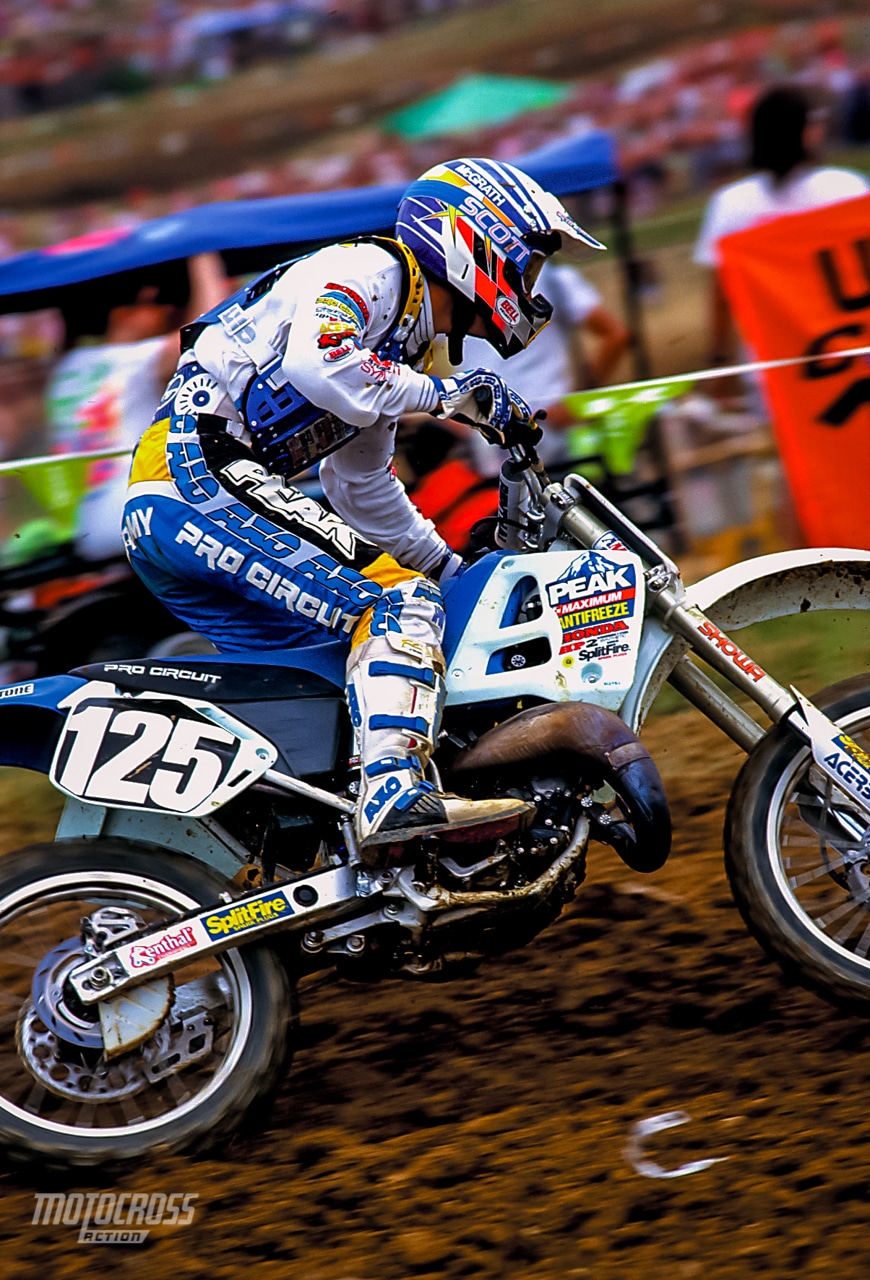 Jeremy McGrath on his Team Peak Honda CR125.
Jeremy McGrath on his Team Peak Honda CR125.
WHEN DID YOU GET PROMOTED TO MANAGE THE PRO CIRCUIT TEAM? It was a different time than it is now. We had a small group of people at Pro Circuit, and everyone wanted Mitch to succeed, so we worked as hard as we could to make sure that happened. At the end of 1996, Mike Hooker, who was in charge of the team and the development side of things, moved to Team Honda, and that allowed me to move up to his position. I was in that position until I left Pro Circuit in 2002; however, the success came because so many young people worked there who were enthusiastic about doing well. It was a fun time to be involved with the program.
YOU LEFT PRO CIRCUIT IN 2002 TO BECOME TEAM MANAGER AT TEAM YAMAHA. WAS THAT A BIG CHANGE? Yes, it changed a lot. At Pro Circuit, Mitch was the guy who made the calls. We all agreed and moved forward every weekend throughout the race season. There was no one above Mitch, and we were all as close as possible. Pro Circuit was a much different landscape from the factory teams. Team Yamaha was much different than I had ever truly imagined, much more of a big corporation with a lot of people to answer to. But, I worked with great people on both sides. Keith McCarty, the Division Manager for Motorsports, and Mike Guerra, the Department Manager, helped me a lot in the very beginning. They tried to steer me in the right direction, and I have been there 17 years.
 The men in blue celebrating Justin Barcia win at Ironman last year.
The men in blue celebrating Justin Barcia win at Ironman last year.
YAMAHA RACING HAS GUYS WHO HAVE BEEN THERE LONGER THAN YOU, TRUE? Yes. The average age in years at Team Yamaha is quite high for a couple of reasons. One, it is an awesome company to work for, and the guys who have been there for a long time have been great at their jobs, so there was no real reason for them to leave. Right now, we are in the transition where some new people are coming in, but still we have a lot of people who have been there 10, 15, 20 or 30 years.
WHO WAS ON TEAM YAMAHA WHEN YOU FIRST CAME THERE? Tim Ferry was on the YZ400 four-stroke, and David Vuillemin was riding the YZ250 two-stroke. New for the 2003 season was Chad Reed, who was moving up from the Yamaha Troy Team. Chad was probably the newest guy on the team when I got there. That was an interesting time. They were definitely three different personalities. You had to treat each person a little differently.
FOUR-STROKES WERE STILL IN THE DEVELOPMENT STAGE. DID YOU HAVE ANY INKLING THAT THEY WERE GOING TO TAKE OVER? Early on, I was not a big fan; however, when I came to Yamaha, Bob Oliver was the guy who knew everything there was to know about four-stroke engines. I had literally no experience in four-strokes at all other than riding a Honda XR75. We had done some work early on at Pro Circuit on a 250F, but that was very minimal. I knew much more about two-strokes.
DO YOU HAVE ANY SAY IN WHAT RIDERS TO SIGN? HOW DOES YAMAHA GO ABOUT CHOOSING WHICH RIDERS TO GO AFTER? I think we all have our opinions on which guys we should go after—and guys that we should try to keep on our team. So, along with the group that is in charge of management, we sit down and say, “These are the guys we should try to get on our program.” There are a lot of different factors about achieving success in the 250 class and success in the 450 class. Sometimes, in the 450 class, it takes a little longer to get all your ducks in a row. It is disappointing to see some guys not succeed that you know have the talent to do that.
WHAT IS THE MOST IMPORTANT THING TO LOOK FOR WHEN SIGNING A RIDER? The commitment to win. Everyone in the Yamaha paddock or on the team works 100 percent to get the end result, but it takes a rider to do the same thing.
AS A MANAGER, DO YOU FEEL FRUSTRATED WHEN YOU CANNOT MAKE THEM SUCCEED? I think that everybody has the same goal—to win. At any race team, that is the number one thing. The step up to the 450 class is a big step. I think there are only a few people who have been able to come in and make that step right off the bat. They are few and far between.
“EVERY PARENT HAS OPINIONS ON HOW THEIR KID SHOULD BE TREATED AND OVER THE COURSE OF THE YEARS, YOU WILL EVENTUALLY HAVE A SCUFFLE WITH SOMEONE OVER THEIR KID. THAT’S JUST PART OF IT.”
TEAM MANAGERS ALWAYS COMPLAIN ABOUT PARENTAL INTERFERENCE. HAVE YOU HAD BAD EXPERIENCES? Every parent has opinions on what should happen, how their kid should be treated and what their kid needs. As a team manager, you need to take each one of those opinions as they come. Over the course of the years, you will eventually have a scuffle with someone over their kid. That’s just part of it.
WHY DID YAMAHA DISBAND THE FACTORY TEAM AT THE END OF 2009. WHAT WAS THE MINDSET? That was definitely a different approach to racing—and that came from upstairs. It was not a good time for the industry, and budgets were being cut. Yamaha had satellite teams that had good sponsorship deals so that they could continue to race. Yamaha kept a few of our team people in place, and we tried to support our satellite teams the best we could with development parts, outside assistance and helping with their bikes. I think in some respects it worked out, and in others it didn’t, but we never lost the passion to want to race at Yamaha. But things have to line up and come together to make it work.
IT TOOK SIX YEARS BEFORE A FACTORY YAMAHA TEAM RETURNED. WHAT MADE THAT HAPPEN? A lot of it was timing. We had a great sponsor that was willing to come on board in Monster Energy. We had a couple of others that came in to allow us to get the band back together. Chad Reed was available, and that was a big kudos. A lot of people at Yamaha liked him. He was a solid guy. Some of the sponsors did not necessarily pan out, but we were able to grow the program. The first year we came back as a Supercross-only team, but the next year we were able to come back with two riders and do the entire series.
 Chad came back to Yamaha to ride out the rest of his career, but that didn’t work out.
Chad came back to Yamaha to ride out the rest of his career, but that didn’t work out.
EVERYONE BELIEVED THAT CHAD REED WAS BACK AT YAMAHA FOR GOOD, BUT HE DIDN’T STAY LONG. WHAT HAPPENED? That was a bummer. A lot of us thought that Chad would finish out his career with us, but it just did not work out that way. It was a little disappointing for me, but Chad Reed’s plan and our plan did not really match at the very end.
THERE WAS A FEELING THAT THE YAMAHA TEAM RETURNED SO THAT IT COULD BE BUILT AROUND COOPER WEBB. TRUE? That was the long term plan for sure. He did an amazing job on the Yamaha YZ250F, and we wanted him to do the same thing on the YZ450F.
TEAM YAMAHA’S BREAKUP WITH JGR YAMAHA WAS A SHOCKER. DID YOU STEAL COOPER WEBB FROM THEM? That is a false impression. We had a great relationship with JGR for a long time. When we withdrew our factory effort in 2009, JGR was our flagship team. It just came down to the fact that we gave them a lot of money to help their program and we used some of that budget when we came back to racing. We wanted them to continue to ride Yamahas, but we could not financially give them as much money as we once had. It was a business decision.
 Cooper Webb was Yamaha’s big hope for the future, but that didn’t work out.
Cooper Webb was Yamaha’s big hope for the future, but that didn’t work out.
“I THINK THAT A LOT OF THE BAD RAP COMES BECAUSE THE YZ450F IS A LITTLE DIFFERENT. EVERYBODY HAS THEIR OPINION. I THINK THE PUBLIC OPINION IS A LITTLE UNFAIR.”
THE YZ450F HAS BEEN CRITICIZED BY CHAD REED AND COOPER WEBB, AMONG OTHER YAMAHA RACERS. IT IS OBVIOUS THAT COOPER WEBB DIDN’T LIVE UP TO HIS POTENTIAL ON IT. Over the course of the years of this generation of YZ450F, it has had some ups and downs; but, overall, it is a solid motorcycle that we have had good results with. It has won races around the world. It has been very competitive at times. Every bike has room for improvement, and with each generation, Yamaha has made improvements to the bike. I think that a lot of the bad rap comes because the YZ450F is a little different. Everybody has their opinion. I think the public opinion is a little unfair.
WHAT ARE YOUR THOUGHTS RIGHT NOW ABOUT THE 2019 YAMAHA TEAM? It has not been the success that we hoped for. We ended last season by winning both motos in Indiana. That was an exciting win and long overdue. Then we came into this season and things were going in the right direction, but before we knew it Aaron was banged up and Justin had a crash at home. It just unraveled. I know that there is a lot more in Aaron than we have seen. It is coming.
WILL WE EVER SEE A THREE RIDER TEAM LIKE BACK IN THE GOOD OLD DAYS? It comes down to dollars and cents. To have three or four guys in today’s landscape would be quite expensive. Having two 450 riders fits the budgets of most teams. It would be nice to have three, because it always seems like somebody is not perfectly healthy. It would be nice to have somebody always there, but I don’t think that is in the cards.
YAMAHA IS THE ONLY JAPANESE MANUFACTURER THAT STILL MAKES TWO-STROKES. THOUGHTS? There are a lot of people who like two-strokes, and I am one of them. I enjoy the YZ125 and YZ250, especially the sound and the smell of premix. That is what I grew up racing and loved. I truly believe that Yamaha has a solid platform for both twostroke and four-stroke motorcycles. I believe we are going to continue doing that for quite some time.
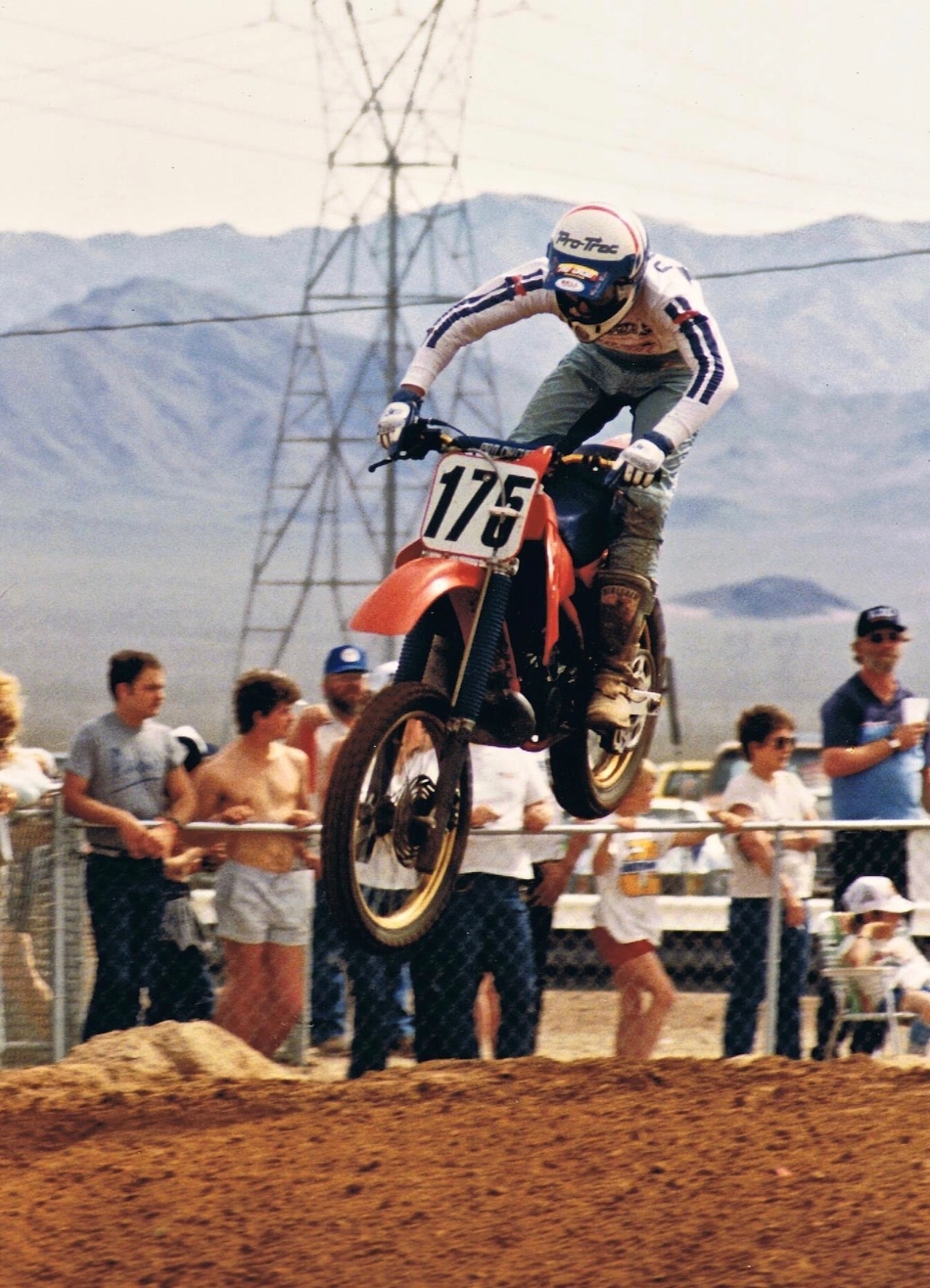 Jim Perry was a two-stroke guy. Here he is on a Pro Circuit Honda back in the Pro Circuit days. Note the Pro-Trac decal on his helmet. His brother John ran the trailer business.
Jim Perry was a two-stroke guy. Here he is on a Pro Circuit Honda back in the Pro Circuit days. Note the Pro-Trac decal on his helmet. His brother John ran the trailer business.
DO YOU EVER TIRE OF LIVING AND BREATHING PROFESSIONAL MOTOCROSS? That is a good question. It is a great job, and I would not trade it for anything. I am fortunate enough to be in a position that I enjoy. We have a great group of people on our team and in our organization. Being around people who race every weekend is exciting. Back at the shop, there are people who don’t come to the races all the time, but they keep the ship afloat. As with any job, some days are better than others.
ON PAPER, WITH JUSTIN BARCIA, AARON PLESSINGER, JUSTIN COOPER AND DYLAN FERRANDIS, THINGS MUST LOOK GOOD FOR THE FUTURE? The Star team is a stand-alone championship program. They have been in the hunt with National Championships the last few years. They are always in the forefront of 250 East/West Supercross races. It was awesome to see Dylan Ferrandis take the 2019 250 West Championship at Las Vegas. That was a big deal for him, a big deal for the team and a big deal for Yamaha. I think these riders will be shining stars.



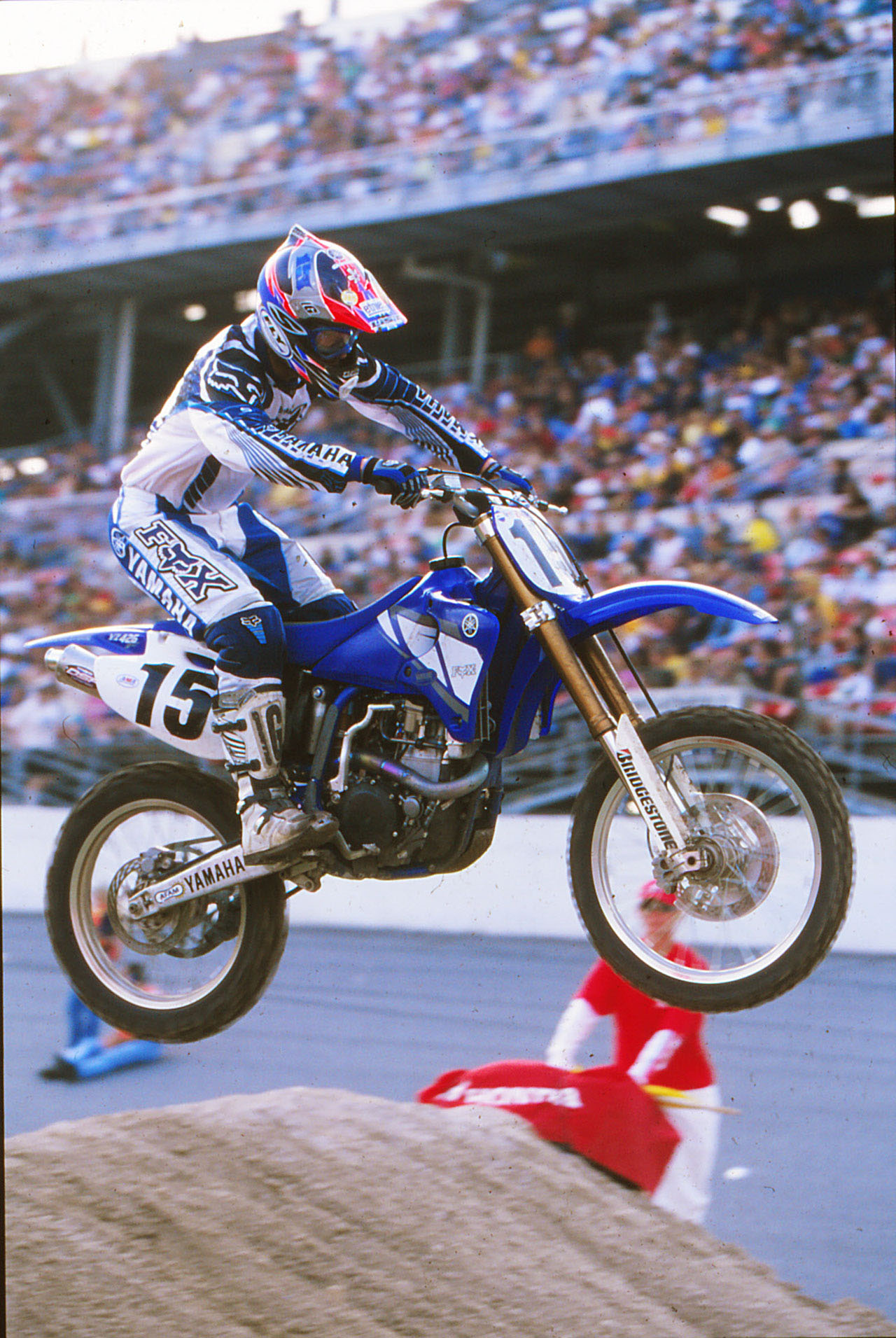


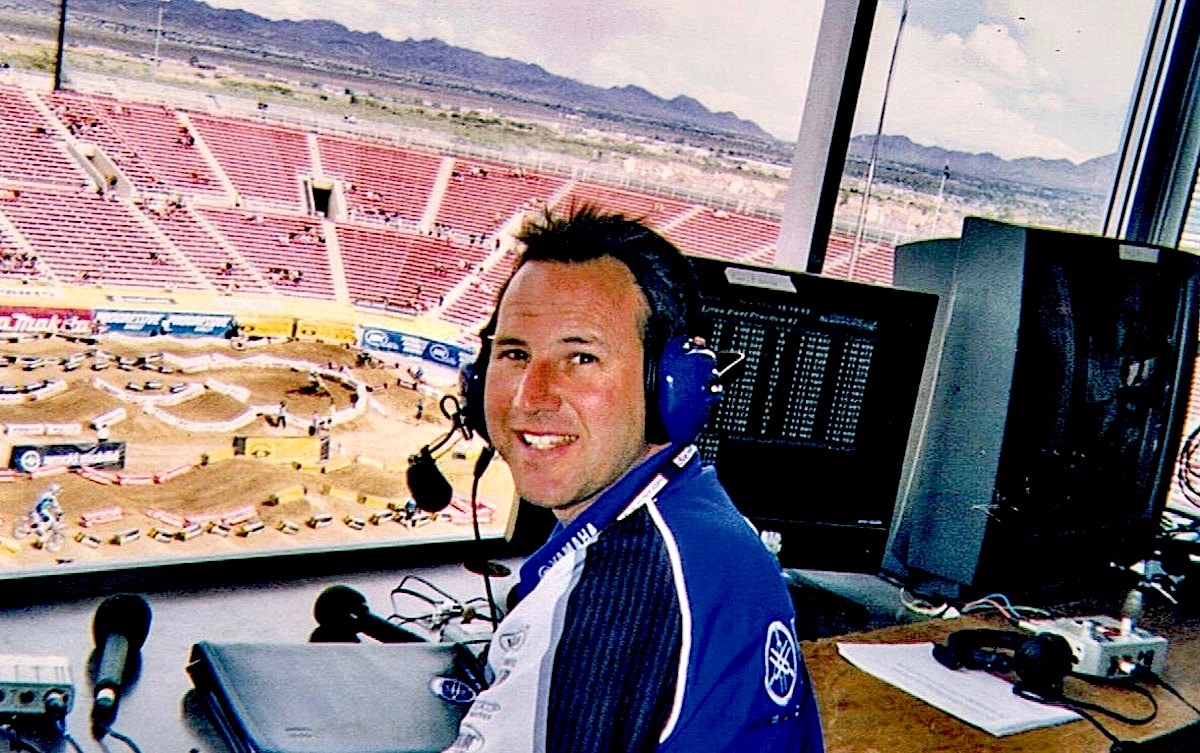


Comments are closed.